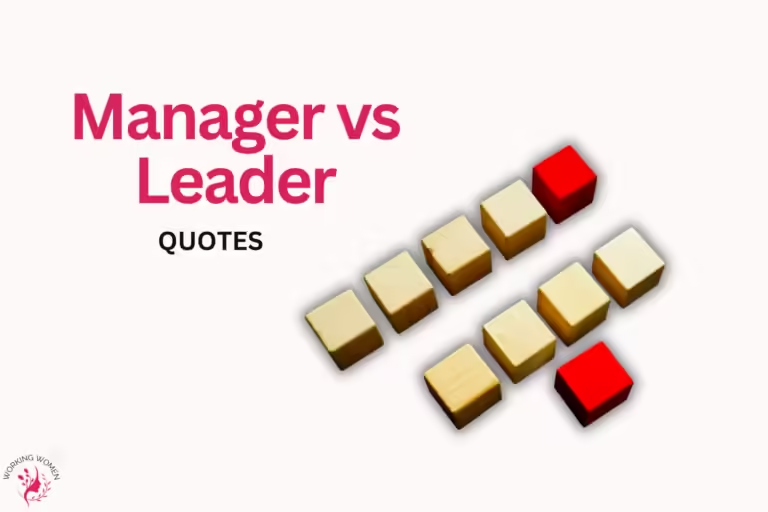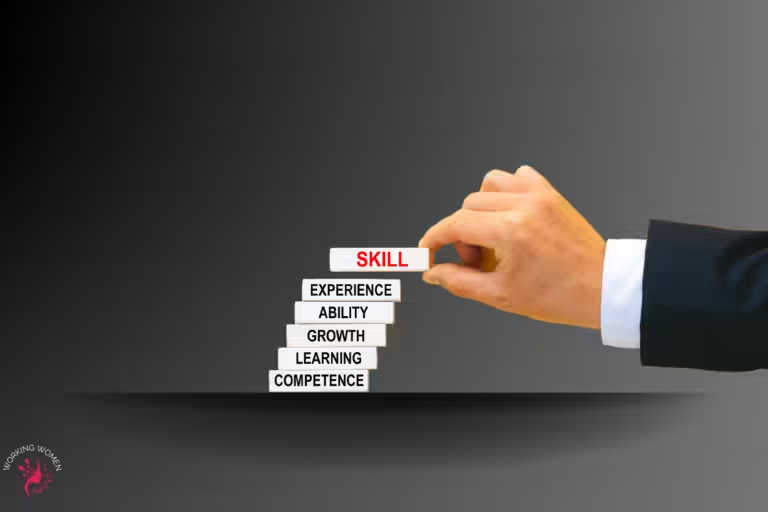10 Active Listening Techniques for better Communication
Have you ever felt like your words lack power, or your team seems disengaged despite your best efforts? Tired of feeling unheard or misunderstood? Have no idea about active listening? Want to be the kind of leader people truly trust and follow?
If this sounds familiar, you’re not alone. Even the most successful leaders sometimes fall into the trap of talking at people instead of truly connecting with them. The result? Missed opportunities, miscommunications, and a sense of disconnect within your team.
But there’s a way to fix this! Imagine if you could master a skill that makes your team feel heard, cuts down on costly misunderstandings, and helps you inspire action in others. The secret starts with how you listen.
That’s the power of active listening. Let’s dive into what it is, why it’s crucial for your leadership success, and how to start implementing it right away.
Table of Contents
What is Active Listening?
According to Harvard, When you are listening actively you are not only hearing what others are saying but also attuning to their thoughts and feelings.
Active Listening Definition
Active Listening is the art of fully Present (mindful) and focused on your speaker, understanding their message, and responding thoughtfully to promote deeper communication.
Power of Active Listening Why it is Essential?
Benefits of Active Listening at Work
- Improve Collaboration: Imagine working on projects where everyone feels heard – ideas flow, problems get solved way faster, and you actually enjoy collaborating!
- Increase Productivity: By reducing misunderstanding and miscommunication. Avoid those “Wait, I thought you meant…” moments that waste time and energy. Get everything right the first time!
- Boost Employee morale: Create a sense of belonging, making employees feel valued and they’ll contribute enthusiastically. When people feel valued, they’re happier and do their best work. Active listening creates a genuinely positive workplace.
- Strong Leadership: Leaders who listen actively gain respect, foster trust and are better equipped to understand their team’s needs.
- Happy Customers, Happy You: Make customers feel like VIPs because you truly understand their needs. This means loyal customers and a good reputation for your company.
Benefits in Relationships
- Deeper Connections: Enhances empathy and fosters a sense of being truly understood, strengthening bonds between partners, family members, and friends.
- Reduced Conflict: Helps prevent arguments stemming from miscommunications and tackle problems together instead.
- Increased Intimacy: Creates a safe space for sharing vulnerabilities and builds trust, leading to a greater sense of emotional closeness.
- Know yourself Better: Surprise! Listening closely to others enhances self-awareness and helps you better understand your own emotions and communication patterns.
Benefits in Social Situations
- Stronger Networking: Builds rapport and fosters genuine connections at social events and professional gatherings. People remember who truly listened to them.
- More Meaningful Conversations: Shifts the focus from shallow interactions to deeper conversations that leave a lasting impression. You will have more real conversations which leave you feel more energized.
- The “People Person” Everyone Loves: People are drawn to those who make them feel heard and valued.
- Reduced Awkwardness: Helps navigate social situations and avoid misunderstandings that can lead to awkward moments. Give you more confidence.
A study conducted in 2023 at Nova Southeastern University, emphasizes that active listening is a skill that can be learned and improved through practice. Some of the important points from this article are that active listening requires concentration, avoiding distractions, and asking clarifying questions.
Are You Really Listening? Common Mistakes Leaders Make
Beware of Distractions: Is your phone more interesting than your team? The same thing goes with the email notifications popping up or your to-do list, concerns about projects, etc.
Jumping to Conclusions: “Ever find yourself crafting a response while someone’s still talking?” when you do this you are sending them a subconscious message that you’re not fully present and trust evaporates. People feel genuinely heard when they can finish their thoughts.
Solution Focused: “Tendency to jump into problem-solving mode before fully grasping the issue” Leaders are action-oriented, so it’s a natural trap. the fast-paced nature of many workplaces can make it feel like there’s no time to fully listen leading them to dive into solutions. But you know the consequences, it demotivates your team if you don’t reach the real cause of the problem.
Let’s take a relatable scenario, An employee is struggling to hit targets. The leader instantly suggests new sales tactics, instead of first exploring if there are external factors, training gaps, or personal problems impacting performance.
Techniques to improve Active Listening
Active listening is a skill, and like any skill, it can be improved with practice and dedication. It involves specific techniques like paying attention to non-verbal cues, asking open-ended questions, paraphrasing for clarity and managing distractions. These skills can be learned, practiced and refined over time.
Your mindset is a key if you believe you can improve and are willing to put in the effort, you will definitely.
Be Fully Present
Fully Present simply means focused and engaged with your all 5 senses in the conversation both mentally and physically.
Mental Presence means giving your undivided attention, avoiding multitasking, daydreaming or mentally drafting a response. You enter the conversation with a willingness to understand, temporarily setting aside your own judgment and preconceived notions. when you are mentally present you pay close attention to speaker’s underlying emotions, picking up on subtle non-verbal cues in their tone of voice, facial expressions and body language.
Physical Presence means you should demonstrate your focus by using non-verbal cues like eye contact, nodding, and leaning slightly towards the person to signal you are engaged. You can also add mirroring (Subtly) it simply means reflecting the speaker’s overall energy level and tone, but without mimicking in a way that feels unnatural. This helps build rapport.
Ask Open-ended Questions
In order to get deeper understanding, demonstrate genuine interest and empower the speaker to uncover hidden thoughts and feelings. you can ask open-ended questions.
Well! open ended questions often starts with “How”, “Why”, “What”, “Tell me about…”, or “Explain” etc.
Avoid asking questions with answers Yes or No.
while asking questions, instead of asking, “Did that make you angry?” Try “How did that situation make you feel?” Instead of: “Are you sure” try: “Tell me more about why you’re certain,”
Ask Follow-up questions to keep conversation flowing.
Silence is Golden, Be Patient
Sometimes the most powerful tool in active listening is simply being patient and allowing for silence. Resist the urge to fill every pause with solutions, your own opinions, or even attempts to comfort the speaker too quickly.
While patience goes hand-in-hand with silence, it provides the speaker time to gather their thoughts, process their emotions, and potentially share something deeper than their initial response. Jumping in too soon can cut off a train of thought or make the speaker feel their ideas weren’t fully heard. Give them the time and space to fully express themselves.
How to use this technique:
- Count Silently: After the speaker pauses, count to five slowly in your head before saying anything.
- Focus on Non-Verbal Cues: Observe their body language and facial expressions during the pause. This can offer valuable insights.
- If Necessary, Prompt Gently: If the silence becomes lengthy or awkward, use an open-ended prompt like, “Would you like to say more about that?” or “It seems like there’s more on your mind.”
Restating and Clarifying
Try to give a precise summary, capturing absolute essence in your own words by taking a longer piece of communication into a more succinct one. Capturing includes not only words but the underlying meaning of what’s being said.
It will help you to accurately grasp the key aspects of the conversation but also show the speaker you’re truly listening and valuing their perspective, making them feel heard and understood.
Avoid Judgement
It means setting aside your personal opinions, beliefs, and biases to truly hear and understand the speaker’s perspective, even if you ultimately disagree. Why? Because jumping to judgment often leads to offering solutions before fully understanding the problem.
Secondly, if people feel judged, they shut down and become defensive. Active listening creates a safe space where they can share openly. Judgment clouds your ability to see the situation through the speaker’s eyes and you might miss important nuances or reasons behind their feelings and actions.
How to Avoid Judgement:
- Recognize Your Biases: We all have them! Be aware of your assumptions or preconceptions that might skew your listening.
- Focus on Understanding, Not Agreement: Your goal is to see the world through their eyes, even if you don’t ultimately share their opinion or solution.
- Don’t Interrupt: Let the speaker finish their thoughts without interjecting your judgments or counter-arguments.
- Validate Their Perspective: Use phrases like, “I can understand why you feel that way,” even if you don’t agree. This shows you’re listening, not just waiting to argue.
Remember Avoiding judgment doesn’t mean you have to abandon your own values or agree with everything you hear. It means setting those aside temporarily for the sake of deeper understanding.
Conclusion
Active listening is the secret to building strong relationships, leading effectively, and understanding others deeply. It means being fully present, avoiding distractions, asking thoughtful questions, and focusing on understanding the speaker’s perspective before offering solutions or judgments.
This powerful skill boosts collaboration at work, fosters intimacy in your personal life, and makes you a sought-after conversationalist. Remember, active listening can be learned and improved with practice!
FAQs
Active listening in the workplace is the practice of fully focusing on a speaker during work-related conversations, understanding their message, and demonstrating that understanding through thoughtful responses.
It is different from simple listening as it includes undivided attention, noticing non-verbal cues, open-ended questions, paraphrasing and summarizing speakers’ communication, and avoiding judgment.
These students are driven by a genuine desire to understand the world around them. They ask insightful questions, seek clarification, and go beyond simply memorizing facts. Active listening comes naturally as they want to absorb knowledge effectively. Here are some signs you can notice in such students
- Maintains eye contact with the speaker (as culturally appropriate).
- Nods along to show understanding and encouragement.
- Open posture, perhaps leaning slightly towards the speaker.
- Don’t fidget or engage in distracting behaviors.
Some students might practice active listening quietly, without being highly verbal. Look for focused attention and thoughtful responses, even if they don’t speak up constantly.
Active listening is a skill, and like any skill, it can be learned, practiced, and improved over time. It involves your learning mindset, specific techniques, self-awareness and practice.
Active listening is a skill you can develop! Start by focusing on a few techniques in casual conversations.
Find a practice partner for feedback, or even observe others who are great listeners. Utilize online resources for exercises and examples. Remember, be patient with yourself and practice in diverse situations to become a truly effective active listener.
The Three C’s of Active Listening are Concentration, Comprehension, and Caring.
Concentration includes giving your speaker undivided attention. Comprehension means truly understanding speakers’ messages and the underlying emotions they’re might expressing. Caring includes a genuine interest in the speaker and their perspective. Convey empathy through your non-verbal cues and by validating their feelings, even if you don’t necessarily agree with their solutions.
Active listeners are focused, demonstrate engagement through body language, seek to understand both content and emotions, ask insightful questions, and withhold judgment to fully grasp the speaker’s perspective.
Attitude: Active listening requires a genuine desire to understand the speaker’s perspective and connect with them. Approach the conversation with openness and a willingness to set aside your own opinions temporarily.
Attention: Give the speaker your full focus, minimizing both external distractions (like your phone) and internal distractions (like your own racing thoughts). Demonstrate attentiveness through eye contact, nods, and other non-verbal cues.
Adjustment: Be flexible in your listening. This might mean:
- Adjusting to the speaker’s energy level and communication style.
- Adjusting your understanding as you gain more information.
- Adjusting your responses based on their needs (questions, validation, summarizing, etc.).






